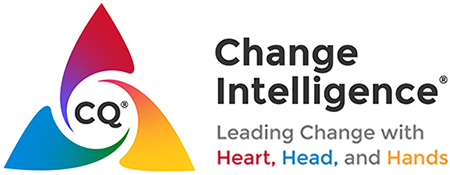When you think of “sales” and “salespeople,” what words leap to mind? While some have positive perceptions, many would respond with choices such as, “sly, slick, and smarmy”! Regardless of your formal role or job title, we’re all in the business of sales and we’re all salespeople – whether we like it or not. This is an especially critical message for Change Leaders. It’s all about influencing others towards new directions. We partner with people to “sell” the new way and our ability to do this effectively has a direct outcome on the results we seek.
Now, in case that sounds like a “sales tactic,” let’s look at what it means to sell our ideas, our vision and intended outcomes. What is the fine line betweenmotivation and manipulation? To me, the difference comes down to two critical issues – mindset and goal. Is our mindset that we are doing something “to” or even “in spite of” others, or, “for” and even “with” them? Is our goal myopic self-interest, or is our intent to partner with others toward a positive new future for all?
We need to “adjust our style” to fit the audience as well as the stage in the sales cycle. Change Intelligent Leaders are aware of their style in leading change, and have the savvy to adapt it – whether they are working with executive sponsors, impacting business leaders, or negotiating with project team members – to give people what they need “get it, want it, and be able to do it.”
That of course is the essence of CQ – that we each have a dominant tendency when leading change – to focus on the Heart, the Head, or the Hands – but the most effective among us know that successful and sustainable change needs all three: to show people the vision for the change (the Head), to communicate how people will be impacted by the change (the Heart), and to devise a sound plan to close the gap between current reality and the goal (the Hands).
We so often focus on the “how” – and this tendency is particularly strong in “high Hands” Change Leaders – which is true for many PMs, given their execution-based roles. Clearly, this is an important and necessary focus. Indeed, one of the most common root causes of the shockingly high failure rate of major changes (70%!) is the lack of sound implementation and process to sustain the gains. This is where high Hands Change Leaders shine.
And (not but!) while the “how” is important, people crave to know the “why” behind a change. “Why is this happening? Why are you asking me to do this? Why yet another change?” As humans, we are more motivated to work toward a goal when we see the line-of-sight between the part we are asked to play and the end game.
Change Intelligent Leaders communicate the “how,” the “why” – and the “who.”
Connecting with the Hands, Head, and Heart. All three are requirements for genuine commitment from our teams and our people – as opposed to resigned compliance. “Rain-making” salespeople and impactful Change Leaders actively develop and deploy their influence skills to follow the Platinum Rule – to do onto others as THEY want/need to be done onto – to “close the deal” and achieve the results they seek – for everyone’s mutual benefit.
Ready to create powerful and lasting results for your team or organization? Discover your Change Intelligence here.
